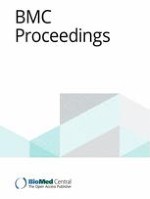Open Access 01-12-2017 | Original Paper
Think 500, not 50! A scalable approach to student success in STEM
Published in: BMC Proceedings | Special Issue 12/2017
Login to get accessAbstract
Background
UMBC, a diverse public research university, “builds” upon its reputation in producing highly capable undergraduate scholars to create a comprehensive new model, STEM BUILD at UMBC. This program is designed to help more students develop the skills, experience and motivation to excel in science, technology, engineering, and mathematics (STEM). This article provides an in-depth description of STEM BUILD at UMBC and provides the context of this initiative within UMBC’s vision and mission.
Key highlights
The STEM BUILD model targets promising STEM students who enter as freshmen or transfer students and do not qualify for significant university or other scholarship support. Of primary importance to this initiative are capacity, scalability, and institutional sustainability, as we distill the advantages and opportunities of UMBC’s successful scholars programs and expand their application to more students. The general approach is to infuse the mentoring and training process into the fabric of the undergraduate experience while fostering community, scientific identity, and resilience. At the heart of STEM BUILD at UMBC is the development of BUILD Group Research (BGR), a sequence of experiences designed to overcome the challenges that undergraduates without programmatic support often encounter (e.g., limited internship opportunities, mentorships, and research positions for which top STEM students are favored). BUILD Training Program (BTP) Trainees serve as pioneers in this initiative, which is potentially a national model for universities as they address the call to retain and graduate more students in STEM disciplines – especially those from underrepresented groups. As such, BTP is a research study using random assignment trial methodology that focuses on the scalability and eventual incorporation of successful measures into the traditional format of the academy.
Implications
Critical measures to transform institutional culture include establishing an extensive STEM Living and Learning Community to increase undergraduate retention, expanding the adoption of “active learning” pedagogies to increase the efficiency of learning, and developing programs to train researchers to effectively mentor a greater portion of the student population. The overarching goal of STEM BUILD at UMBC is to retain students in STEM majors and better prepare them for post baccalaureate, graduate, or professional programs as well as careers in biomedical and behavioral research.





